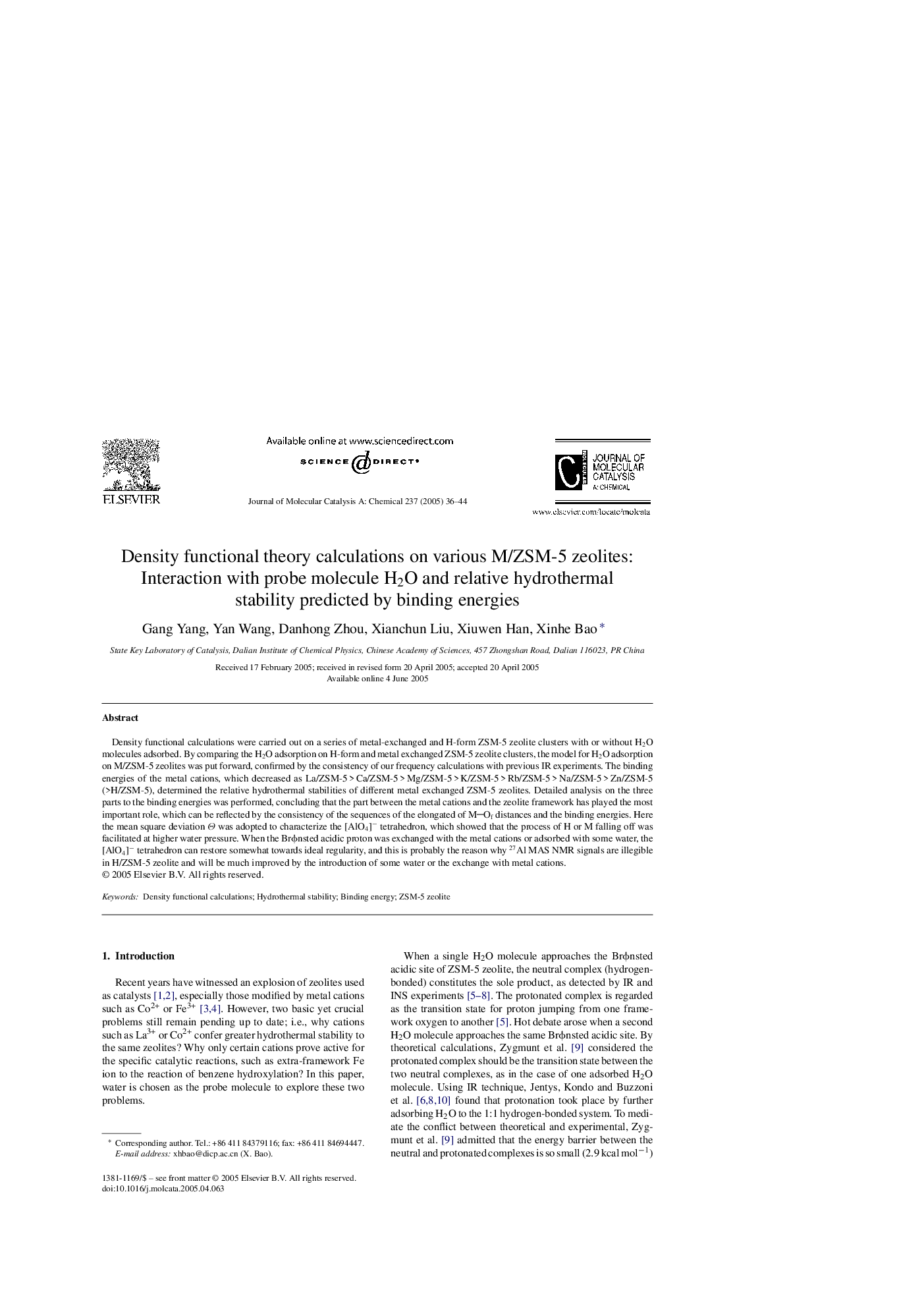| Article ID | Journal | Published Year | Pages | File Type |
|---|---|---|---|---|
| 9614556 | Journal of Molecular Catalysis A: Chemical | 2005 | 9 Pages |
Abstract
Density functional calculations were carried out on a series of metal-exchanged and H-form ZSM-5 zeolite clusters with or without H2O molecules adsorbed. By comparing the H2O adsorption on H-form and metal exchanged ZSM-5 zeolite clusters, the model for H2O adsorption on M/ZSM-5 zeolites was put forward, confirmed by the consistency of our frequency calculations with previous IR experiments. The binding energies of the metal cations, which decreased as La/ZSM-5Â >Â Ca/ZSM-5Â >Â Mg/ZSM-5Â >Â K/ZSM-5Â >Â Rb/ZSM-5Â >Â Na/ZSM-5Â >Â Zn/ZSM-5 (>H/ZSM-5), determined the relative hydrothermal stabilities of different metal exchanged ZSM-5 zeolites. Detailed analysis on the three parts to the binding energies was performed, concluding that the part between the metal cations and the zeolite framework has played the most important role, which can be reflected by the consistency of the sequences of the elongated of MOf distances and the binding energies. Here the mean square deviation Î was adopted to characterize the [AlO4]â tetrahedron, which showed that the process of H or M falling off was facilitated at higher water pressure. When the BrÏnsted acidic proton was exchanged with the metal cations or adsorbed with some water, the [AlO4]â tetrahedron can restore somewhat towards ideal regularity, and this is probably the reason why 27Al MAS NMR signals are illegible in H/ZSM-5 zeolite and will be much improved by the introduction of some water or the exchange with metal cations.
Related Topics
Physical Sciences and Engineering
Chemical Engineering
Catalysis
Authors
Gang Yang, Yan Wang, Danhong Zhou, Xianchun Liu, Xiuwen Han, Xinhe Bao,
